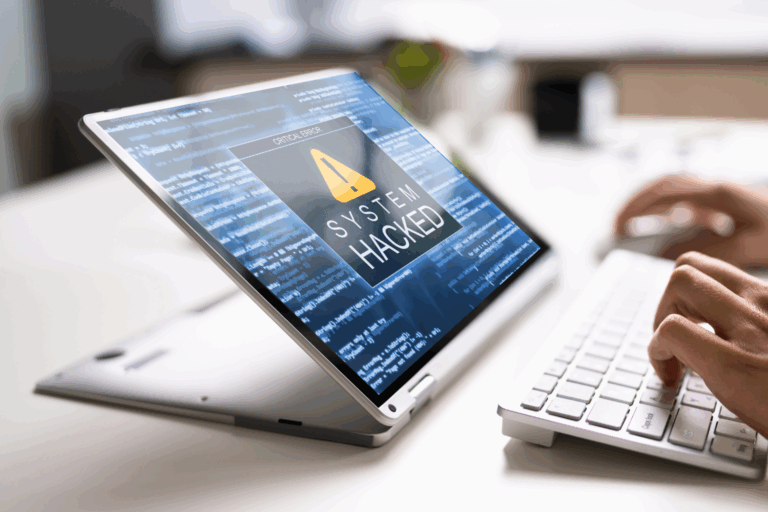The hidden risks of NeoBanks for businesses
Digital banking is booming in the business world. As companies seek faster, more flexible, and globally accessible financial services, NeoBanks are rapidly emerging as viable—and often preferred—alternatives to traditional institutions. But as adoption grows, so do the risks of NeoBanks for businesses—not just from a technical perspective, but from an operational one. Many platforms prioritize convenience and scale, yet fall short when it comes to embedded cybersecurity and real-time risk response.
We’ve seen how finance teams’ expectations have shifted: they want intuitive platforms, real-time payments, and seamless integrations with their accounting or ERP systems. Speed, automation, and cost-efficiency are winning over legacy processes, and business leaders are increasingly open to managing everything online—even without a physical branch.
However, most business banking solutions weren’t built for today’s threat landscape. While fintech continues to innovate, security often lags behind and is treated as a feature, not a foundation. That creates an uncomfortable paradox: the more connected and automated operations become, the more vulnerable they are to cyberfraud and operational failure.

The hidden risks of NeoBanks for businesses
Sleek platforms, intuitive apps, instant transfers, and smart integrations promise speed and efficiency in today’s financial stacks—but beneath the surface, critical vulnerabilities remain. Many are built on fragmented tools, outdated infrastructure, and reactive security features that simply weren’t designed to handle the pace and sophistication of modern threats.
This creates a perfect storm, especially for SMEs. While large enterprises often have dedicated security teams and layered defenses, small and mid-sized businesses work with leaner teams, less oversight, and lower levels of protection. That makes them prime targets. They have an average impact of €35,000 per incident, and alarmingly, 6 out of 10 small businesses never recover from a major breach. In 2024 alone, cybercrime losses in Europe surpassed €10 billion.
Treasury operations is a high-risk zone
But it’s not just about size—it’s about exposure. Treasury operations have become high-risk zones where attackers can exploit weak validation flows, lack of real-time oversight, and overreliance on email or SMS-based processes. Threats are no longer confined to IT, they’re happening inside financial operations, where the impact is direct and immediate.
Some of the most common attack vectors include:
- Phishing and smishing: Fake emails or texts stealing credentials.
- BEC (Business Email Compromise): Impersonating executives or vendors to divert payments.
- Ransomware: Locking access to systems or data, freezing liquidity.
- Software supply chain attack: Injecting malicious code through trusted third-party vendors.
In many cases, banks are not equipped to detect, prevent, or even alert users in time. Legacy systems, slow response protocols, and surface-level fraud controls mean businesses are often left to clean up the mess on their own.
Why cybersecurity can’t be an add-on anymore
The vulnerabilities in today’s business banking stack aren’t just about external threats—they’re also the result of internal design flaws. After all, most platforms weren’t built with modern cybersecurity in mind. Instead, security is often treated as a feature to be added later, as an optional layer rather than a core principle.
This is where some of the most overlooked risks of neobanks for businesses begin to emerge: many digital banking solutions rely on surface-level protections like two-factor authentication or backend encryption, while ignoring the deeper structural issues that leave financial operations exposed.
Outdated systems, real-world consequences
Most traditional banks still run on legacy systems. In fact, 43% continue to rely on obsolete systems with limited capacity to adapt or evolve. These systems were never meant for real-time risk response or seamless integration. As threats grow more sophisticated, the gap between what businesses need and what their banking partners provide keeps widening.
There are blind spots everywhere: centralized admin controls become single points of failure, siloed systems make oversight nearly impossible, and slow response cycles leave teams scrambling to react to threats that move in milliseconds. Even basic fraud detection can take days—meanwhile, funds are lost, trust is broken, and operations grind to a halt.
And while attackers have grown faster and more intelligent, many banks are still releasing security updates on 12–18 month cycles. That’s not just inefficient, but dangerous. Finance teams are left navigating risk with tools that weren’t designed for the reality they’re operating in.
What a cyber-resilient NeoBank model looks like
In this landscape, to protect treasury operations, we need a new NeoBank model that treats cybersecurity as its core operating principle. A cyber-resilient banking model integrates advanced protection at every layer, empowering finance teams to operate securely, confidently, and without disruption. This is a proactive model that builds a system to help prevent human error, detect anomalies in real time, and reduce risk exposure across the board.
It starts with embedding strong internal controls and intelligent automation into the platform:
- Dual-channel confirmations for sensitive operations like payment approvals.
- Customizable user roles and permission structures to control access and reduce internal risk.
- Built-in process validation that prevents errors before they happen.
- A suite of tools that detect non-standard interactions and proactively block them through security alerts before they escalate into actual attacks.
This isn’t about layering on generic tools—it’s about embedding intelligent protection into the flow of operations. When security is invisible but deeply integrated, teams can focus on growth, not firefighting.
What you can do today to reduce the risk of NeoBanks
While the banking industry catches up, finance and operations leaders can’t afford to stand still. The good news? You don’t need a full system overhaul to start improving your defenses. Small, strategic actions can significantly reduce exposure.
Here are some key steps to begin with:
- Assess your current banking stack.
- Strengthen access controls.
- Validate payment workflows.
- Review your security integrations.
- Prioritize platforms with proactive, modern protection.
- Keep your team informed and involved.
Every step toward a more secure setup matters. The goal isn’t perfection—it’s progress, visibility, and resilience.
If you’re rethinking how your company handles financial risk, we’d love to talk.







